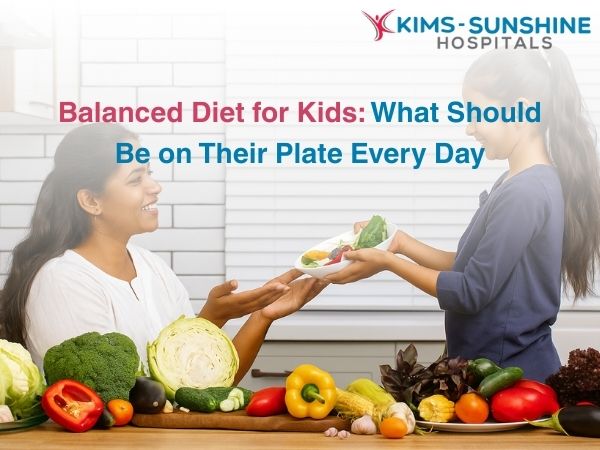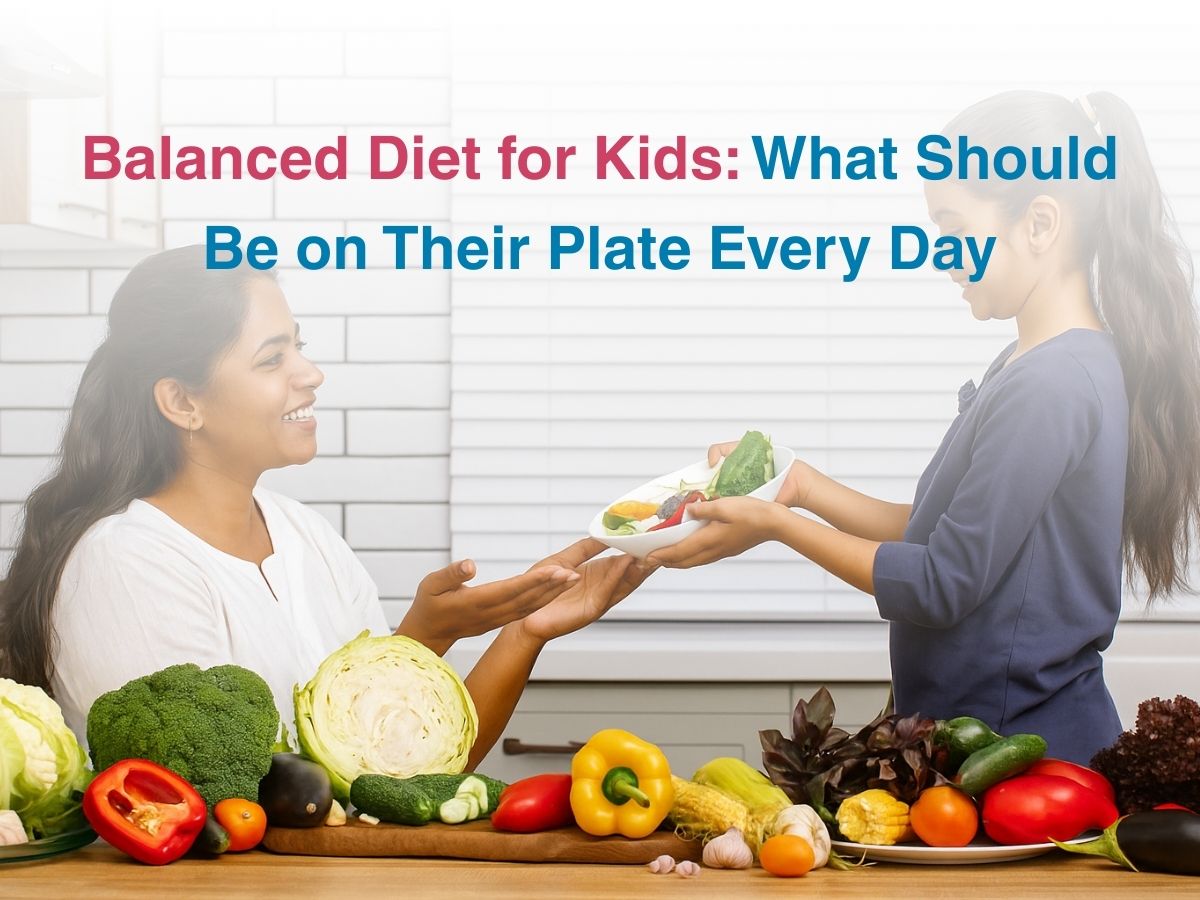
Balanced Diet for Kids: What Should Be on Their Plate Every Day

What Should Be On A Child’s Plate Every Day?
That plate, if you imagine it as a canvas – should carry whole grains like chapati, paratha, poha, or idli, which are more than just fillers- they are the slow-burning fuels that help maintain energy levels during school hours, tuitions, playtime and everything in between.When paired with proteins like moong dal, eggs, paneer, or chicken – they build a solid foundation for developing muscles, strong bones and sharper brains.
A balanced child’s plate is not complete without healthy fats either and this is where our Indian kitchens shine – because the ghee we pour over dal, the coconut in our chutneys, the nuts in our ladoos and even the sesame oil in our pickles bring with them the kind of brain-building, skin-nourishing and energy-sustaining goodness that no packet snack could ever match. Lastly, getting some probiotics in – like spiced buttermilk or curd can greatly help their gut work and feel better.
Balanced Diet Chart For Kids 5 To 8 Years-
Their mornings should begin with warmth and balance- a glass of turmeric milk or a handful of soaked almonds paired with vegetable upma, egg toast, or a stuffed paratha sets the foundation for the day. A mid-morning snack like banana slices or roasted peanuts can prevent energy crashes before lunch arrives. Their lunch box needs to look appetising and taste great and nutritious and some amazing options for harried mums include a whole grain base like rice or rotis, a legume-based protein such as dal or rajma, two different sabzis with veggies and protein and a cooling element like buttermilk or cucumber salad.
Evening hours after school or outdoor play, call for smart snacking- this is a golden window where a fruit smoothie, peanut chikki, moong sprouts salad, or even a small paneer roll can nourish the child without overloading them. By dinnertime, the meal should be lighter than lunch but no less complete- perhaps khichdi with vegetables and ghee, or a simple roti-sabzi meal.
This idealised version of a diet chart is excellent for young kids but just as good and dependable for older kids and teens too.
Nutrient-Dense Meals For Kids-
In today’s fast-paced lifestyle, especially in Indian metros and tier-2 cities where nuclear families and working parents are the norm, the biggest challenge is not the absence of food but the presence of too much low-value food which fills children’s tummies but does not fuel their growth or learning. This is why the concept of nutrient density becomes all the more important – reminding us that every meal and snack must be chosen not just for convenience but for how much nourishment it can pack into every bite.
Meals like moong dal khichdi with vegetables, ragi porridge with jaggery and almonds, besan chilla stuffed with paneer, or a roti made from a blend of flours and filled with vegetables are perfect examples of foods that deliver protein, complex carbs, healthy fat and fibre all in one go. What’s even better- these can be rotated easily across the week to keep the child’s palate interested without compromising nutrition. Even within snacks, there are hundreds of options that are tasty yet high in nutritional value- think murmura laddoos, banana pancakes made with atta, fruit with nut butter, or even roasted makhana with a pinch of salt and ghee.
Conclusion
In a country like India, blessed with so much seasonal, regional, affordable produce and a rich culinary heritage that already values balance and depth, the task of building a balanced diet for a child is not a burden.It is a return to our roots and all it takes is a few minutes of mindful preparation, a little bit of patience and the belief that what’s on your child’s plate today will quietly shape the person they become tomorrow.






